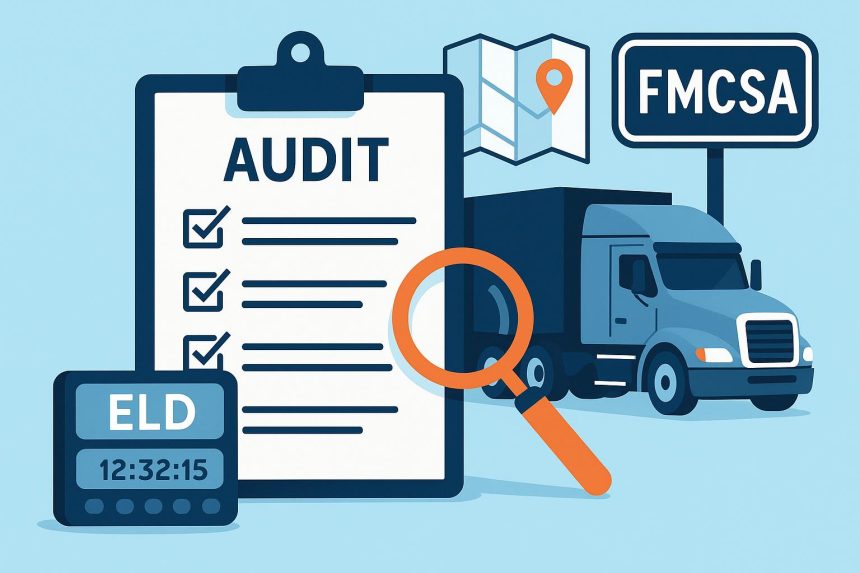Electronic Logging Devices (ELDs) have become a cornerstone of commercial trucking safety. Designed to record a driver’s hours of service accurately, these devices help prevent fatigue-related accidents and ensure compliance with federal regulations. However, having an ELD is only half the story. Experts at the Dormer Harpring law office, who have handled far too many cases, note that carriers must also maintain proper compliance, which is where audits play a crucial role. Understanding how carriers are audited for ELD compliance can help fleet managers stay ahead of potential issues and avoid costly penalties.
The Purpose of ELD Audits
The Federal Motor Carrier Safety Administration (FMCSA) conducts audits to ensure carriers follow hours-of-service rules and use ELDs correctly. Audits help identify patterns of noncompliance, whether intentional or accidental. By reviewing ELD records, regulators can determine if drivers are exceeding the maximum driving hours, failing to take required rest breaks, or manipulating their logs. Carriers found in violation may face fines, operational restrictions, or even more severe penalties.
Types of ELD Audits
Carriers may face several kinds of audits, depending on their size, safety track record, or even random selection by regulators.
1. Compliance Reviews
These are the most common audits. They take a detailed look at a carrier’s records, usually covering six months to a year. Inspectors review electronic logging device (ELD) data alongside supporting paperwork such as bills of lading and driver documentation.
2. Focused Investigations
When a carrier shows repeated violations or complaints are filed, the FMCSA may launch a focused investigation. Unlike a full review, these audits zero in on specific drivers, routes, or compliance issues. They may cover less ground but often probe deeper into problem areas.
3. Roadside Inspections
Although not considered a full audit, roadside inspections play a key role in compliance oversight. Inspectors can check a driver’s ELD records during a stop and issue citations on the spot. Frequent roadside violations can raise red flags and may lead to a broader compliance review.
What Auditors Look For
During an audit, regulators evaluate both the technical use of the ELD and the carrier’s administrative practices.
- Accuracy of Records: Auditors verify that logs reflect actual driving hours and rest periods. Discrepancies can indicate falsification or mismanagement.
- Device Functionality: ELDs must meet FMCSA technical specifications. Auditors verify that devices were installed correctly and are functioning properly throughout the review period.
- Supporting Documentation: Invoices, dispatch records, and fuel receipts help corroborate log entries. Missing or inconsistent documentation can raise red flags.
- Driver Training and Policies: Carriers are expected to train drivers on proper ELD usage and maintain written policies. Lack of training records can be considered a compliance failure.
Preparing for an ELD Audit
Proper preparation is key to a smooth audit. Carriers should:
- Maintain up-to-date driver logs and supporting records.
- Ensure ELDs are functioning correctly and software updates are applied.
- Document internal compliance procedures and driver training programs.
- Conduct internal audits to catch potential issues before FMCSA inspections.
Being proactive reduces the risk of violations and demonstrates a commitment to safety and regulatory adherence.
Common Pitfalls to Avoid
Even with an ELD, carriers can make mistakes that lead to compliance issues:
- Editing logs improperly or manually overriding device data.
- Failing to back up or retain records for the required six-month period.
- Not training new drivers on ELD use or failing to provide policy updates.
- Ignoring discrepancies between supporting documents and ELD logs.
These mistakes may seem minor, but auditors take them seriously, and repeated violations can result in costly fines or operational restrictions.
Conclusion
ELD compliance audits are a crucial component of maintaining safety and compliance in the trucking industry. Carriers that understand the audit process, maintain accurate records, and provide adequate training to their drivers can navigate audits smoothly and avoid penalties. Staying vigilant and proactive ensures both regulatory compliance and safer roads for everyone. If you are facing an audit or have concerns about ELD compliance, consulting a qualified lawyer at Dormer Harpring law office can help protect your business and ensure your rights are upheld.
Lynn Martelli is an editor at Readability. She received her MFA in Creative Writing from Antioch University and has worked as an editor for over 10 years. Lynn has edited a wide variety of books, including fiction, non-fiction, memoirs, and more. In her free time, Lynn enjoys reading, writing, and spending time with her family and friends.















